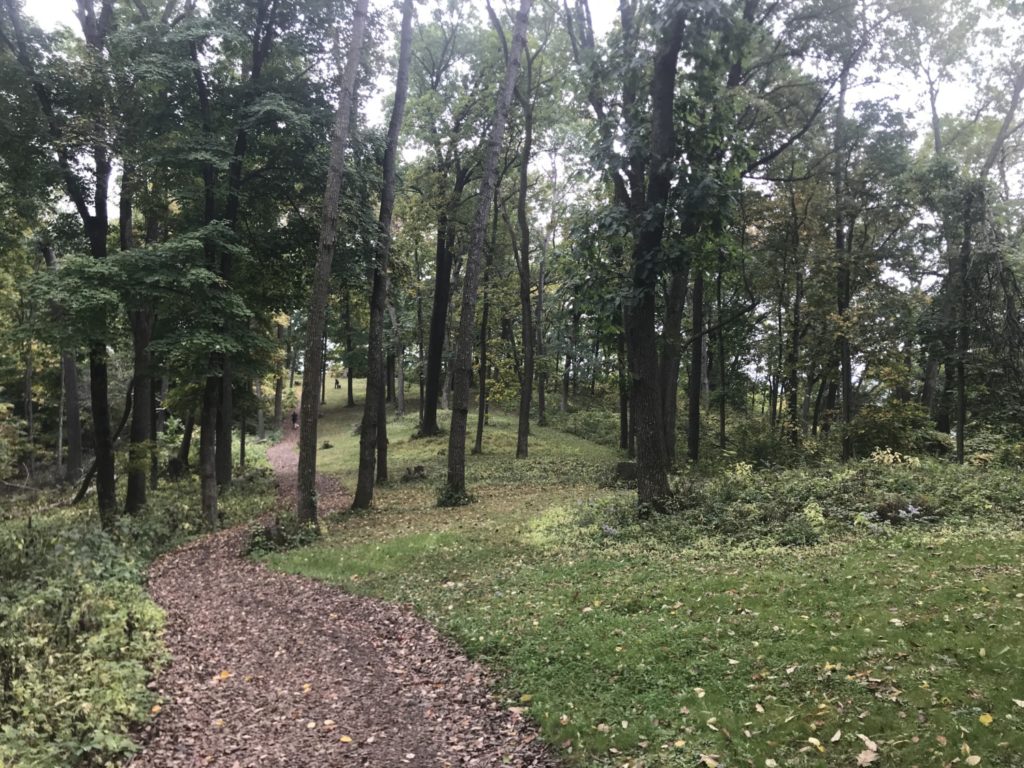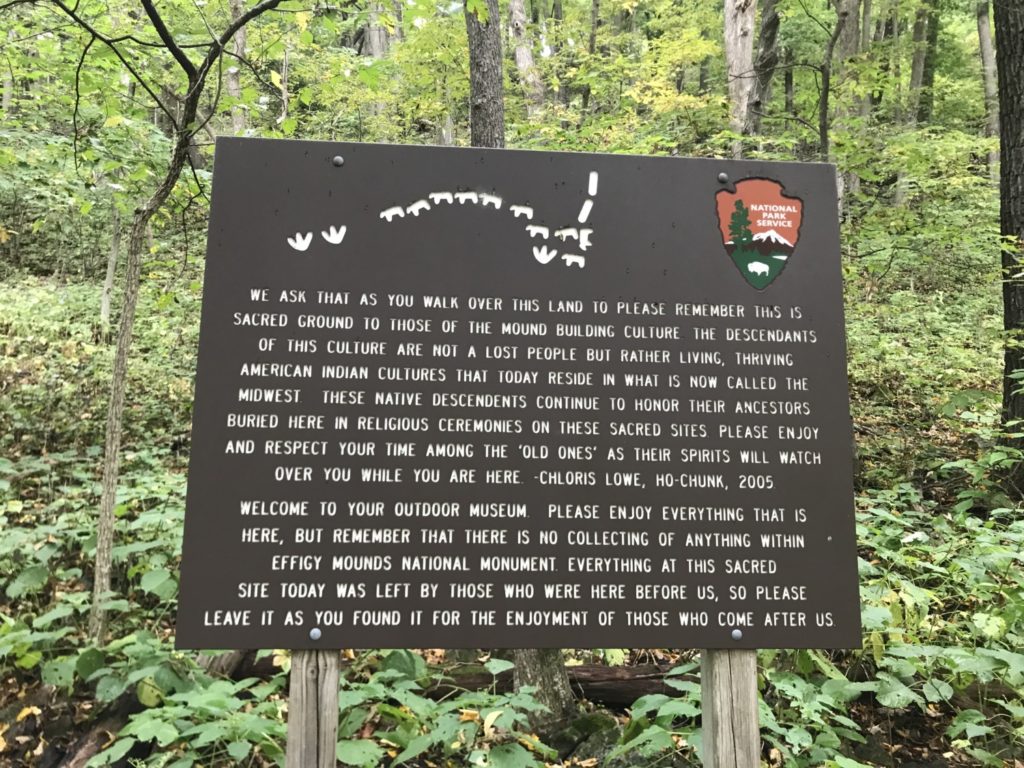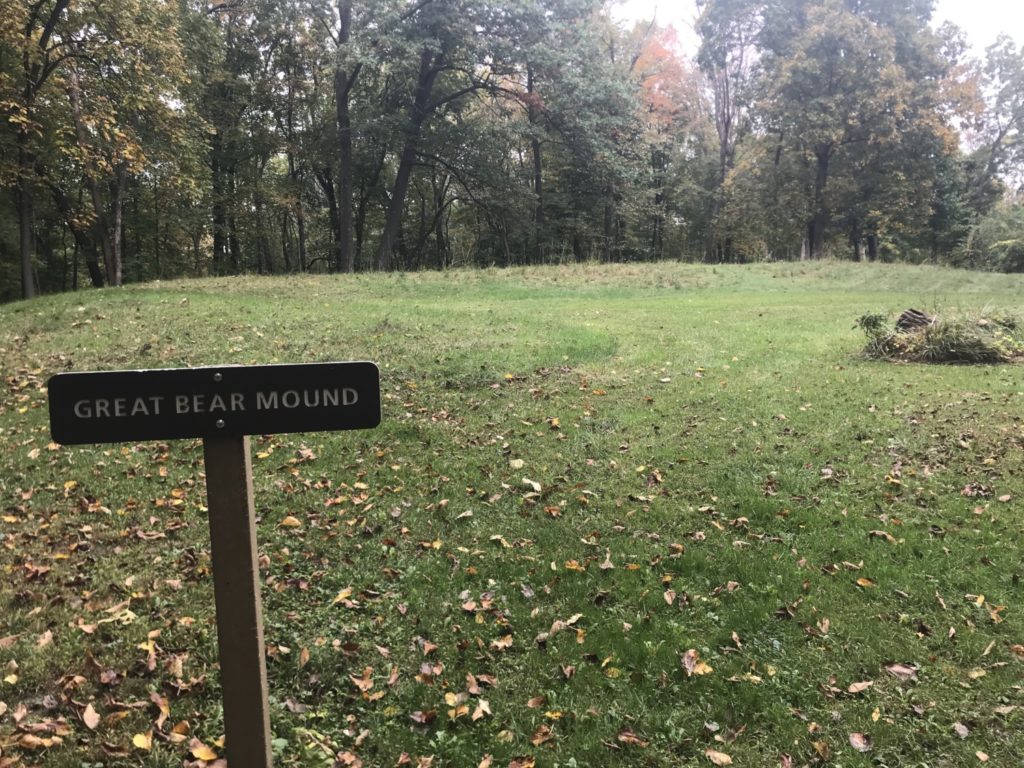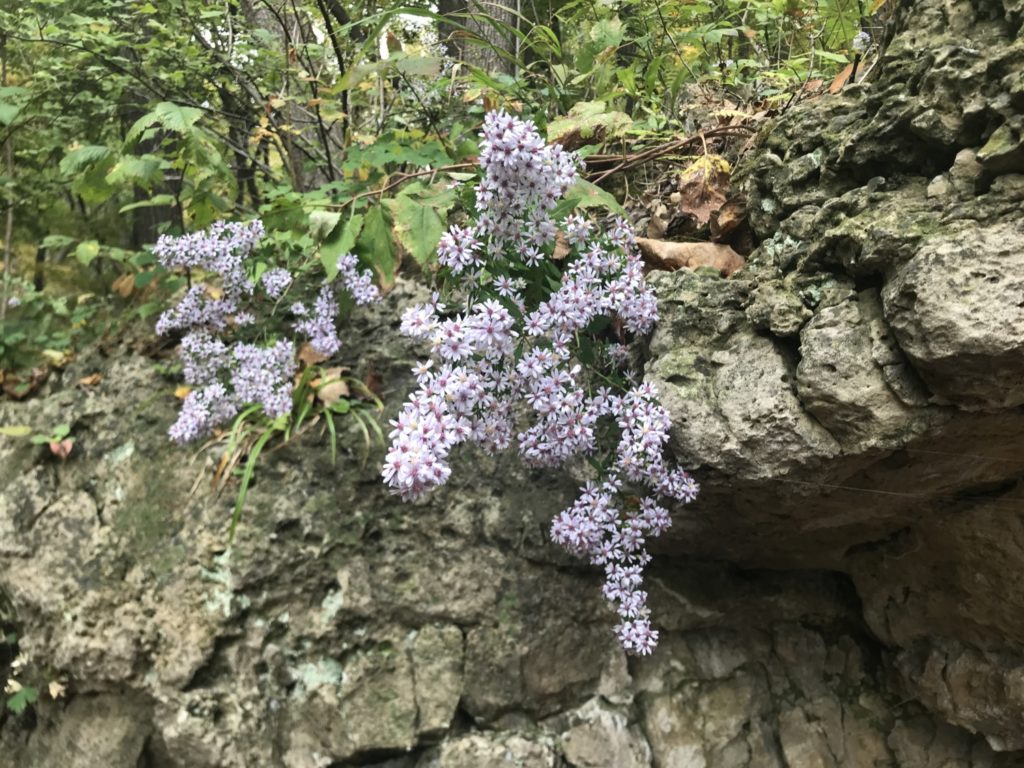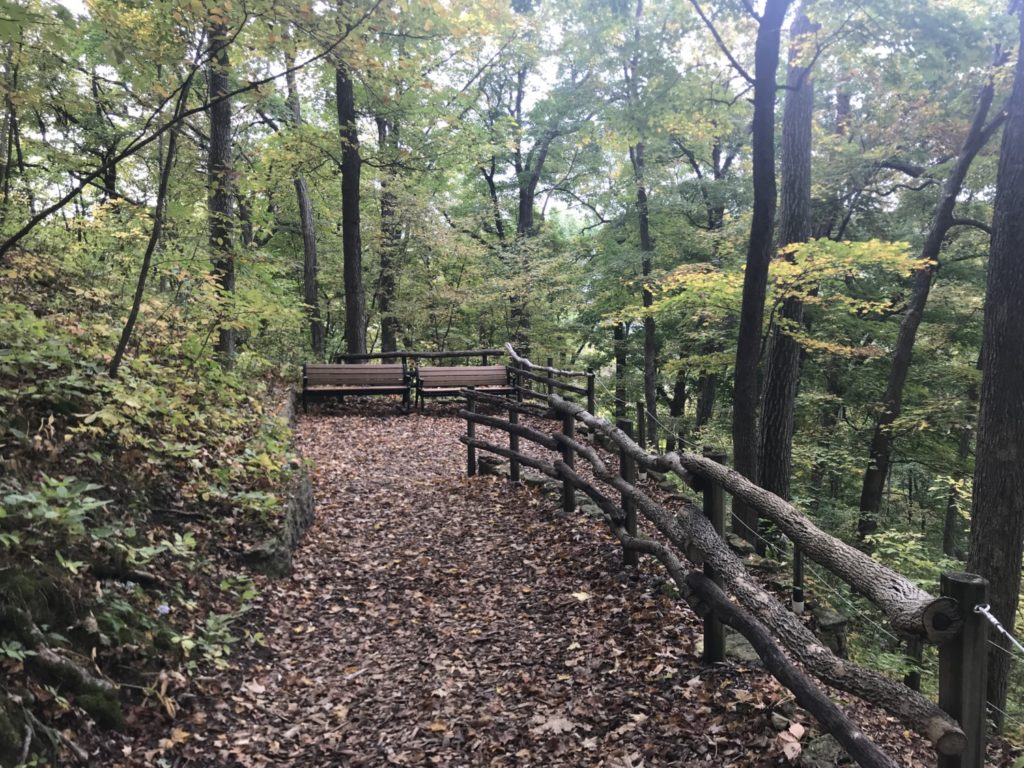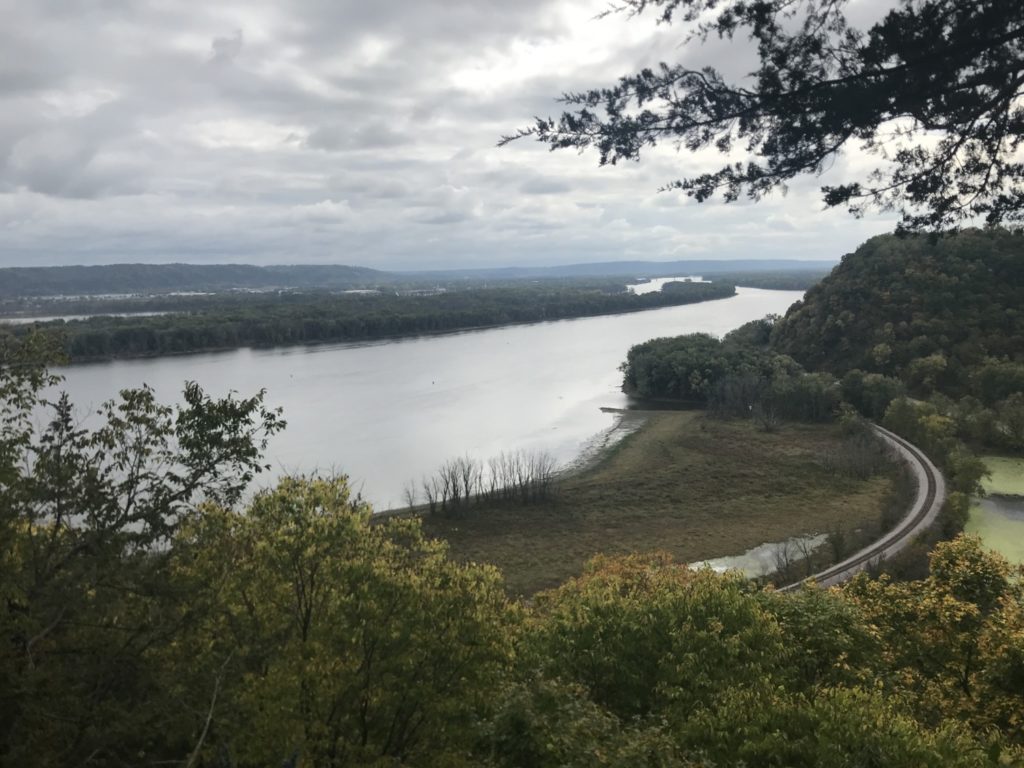One of the National Park sites we visited on our way back to Ohio was Effigy Mounds National Monument in Iowa. Tom and I have seen most of the Native American mounds in Ohio, but we have also seen them in Georgia, Alabama, and Louisiana. When I was a kid, I thought the mounds were unique to Ohio but it turns out there are mounds of many different kinds all over the eastern half of the United States. Some of them are burial mounds but many of them are effigy mounds or shapes that had ceremonial or religious purposes.
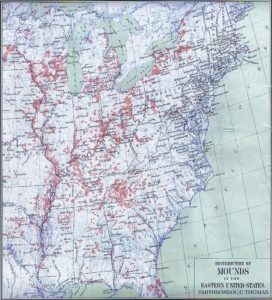
Mounds are often hidden in the landscape and covered by trees. When settlers moved in to areas, they often plowed through mounds and removed anything they found in them. Just as amazing as the original builders are the number of mounds that have been preserved and can still be seen today. Many of them are preserved as State Historic Sites, but a few have reached National Historic status. Hopewell Culture National Historical Park in Ohio, Ocmulgee Mounds National Historical Site in Georgia, and Effigy Mounds National Monument in Iowa are three examples.
Effigy Mounds National Monument is on top of the bluffs rising out of the Mississippi River valley. From the bluffs you can see Prairie du Chien, Wisconsin. Just the view of the Mississippi River valley and the surrounding area was worth the admission price. I could understand why the mound builders would want to build on this site.
The effigy mounds were built in this area and on into the Great Lakes region between 700 and 1300 ACE. The animal shapes chosen had special meanings to the tribes and family groups that built them. The dominant effigy in the National Monument is the bear. There are lines of bears, big bears, and small bears. Of course, it is hard to see them from a ground-level vantage point. Tom and I spent a while studying overhead shots of the mounds in the Visitors Center. That way we would know what we were looking at. As I studied the bears marking the line along the river, I thought of ways that we mark our territory. Was the group of Native Americans that lived in this place broadcasting “You are in Bear territory now”?
The Visitors Center was a little disappointing. A lot of the displays had been taken out because of Covid guidelines. The movie was, again, being redone. But the restrooms were clean and we enjoyed talking to the rangers. One ranger sat outside at an information desk and we were surprised by the number of visitors at the monument on a Saturday in October. The ranger told us that this was their busiest time of year. The weather was cooler, the mosquitoes weren’t as bad, and people were out to see the fall leaves.
There are three disconnected parts of the park. The first is the north section and contains the Visitors Center and the most-commonly hiked trails. The climb up from the river valley is fairly strenuous and there isn’t any access from the top. Tom and I hiked up the trail to the Little Bear Mound Group and out to Fire Point. We also saw the Great Bear Mound Group. But, from ground level, we pretty much had to take the word of the park that the mounds were really shaped like bears. We also walked out to the Fire Point overlook, which was breathtaking.
We were planning on hiking further up to see the Twin Views overlook, but the mosquitoes were so bad we turned around. We had not even thought about bringing insect repellent with us. Waving our arms around was just making us tired, so we headed back down. When we returned to the Visitors Center we asked the ranger why there weren’t viewing platforms so we could actually see the effigy mounds. She told us the park worked in partnership with 21 different tribes and some of the tribes felt it was disrespectful to build platforms. It would be as if visitors were looking down on the tribes. I disagree – a platform would be a way of admiring what the tribes had accomplished – but I don’t make those decisions.
The second unit of the park is a south unit located south of confluence of the Yellow River and the Mississippi. There is a small parking lot just south of the river. Visitors can hike to the Compound Mound Group and the Marching Bear Group from the parking lot. Although the Marching Bear Group is the most interesting mound formation in the park, it is a 4.5 mile hike each direction. Tom and I decided it wasn’t worth fighting the mosquitoes when we wouldn’t get a good view of them anyway.

The third unit of the park is the Sny Magill unit, 12 miles south, down a dirt road down a mountain. Although it has the largest mound group, the rangers don’t advertise it or recommend that people visit.
While we were at Effigy Mounds National Monument, we visited for a little bit with Ranger Fred. Ranger Fred is the curator at Fort Union Trading Post National Monument and we had worked with him for about a month before he left to become acting Chief of Interpretation at Effigy Mounds. He was planning on being back at Fort Union at the end of October.
Effigy Mounds National Monument has an interesting backstory. A previous Superintendent decided to go ahead with building boardwalks and expanding the parking lot without doing the proper archaeological studies or going through the National Park channels. She was fired for violating dozens of NPS regulations.
During the investigation into her conduct, they discovered that curatorial artifacts, including human bones, were missing. After excellent detective work by an NPS investigator, the National Park Service discovered that Thomas Munson, Superintendent at Effigy Mounds from 1971 to 1994, removed boxes of human remains from the park and stored them in his garage! Criminal charges were filed and he was sentenced, in 2016. He was given one year in prison, a fine of $100,000 and has to pay restitution of over $100,000 to the park.
Believe me, neither of these cases is the norm for behavior in the National Park Service!
Tom and I enjoyed our visit to Effigy Mounds National Monument. We learned a little more about effigy mounds and their history. We both agreed that if we lived in the area, we would go to the park frequently just for the hiking. But we would take mosquito repellent!



